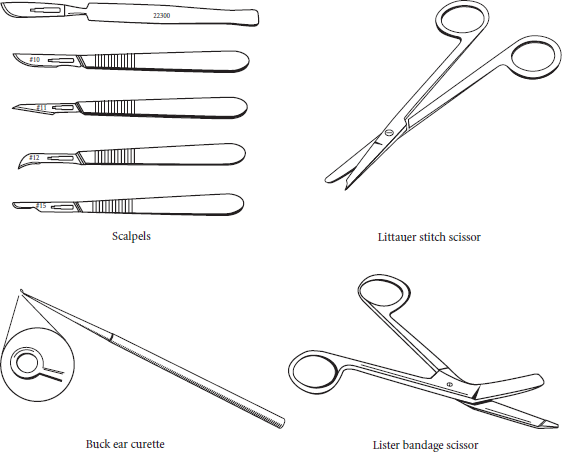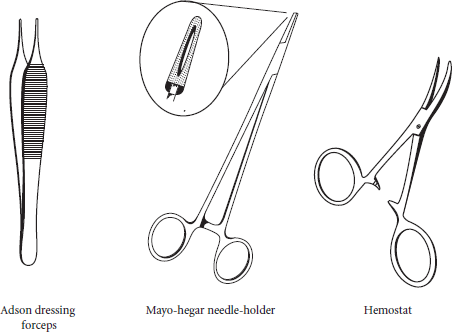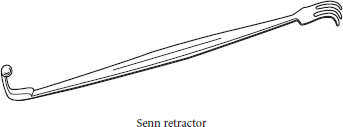Cutting: these instruments are used to cut tissue, incise, scrape, puncture, or punch. You will find scissors, scalpels, curettes, drills, punches, chisels, and needles.
Bandage scissors: blunt tip to remove dressings without damage to skin; come in many different sizes
Operating scissors: common types are Iris, Metzenbaum, or Mayo—used to cut or dissect tissue and may have straight or curved blades
Littauer or stitch scissors: used to remove sutures; has a beak or hook used to lift the suture up and cut it
Scalpel: usually disposable with attached blade but can be a reusable handle with interchangeable blades

Clamping and holding: used to clamp, hold, and manipulate tissue
Hemostats: designed to stop bleeding or clamp severed blood vessels; may be serrated, curved, or straight; come in various sizes
Needle holders: used to hold curved needles to grasp the needle tightly; has serrations or a groove in the center in order to hold the needle
Dressing forceps: vary in length and usually have serrations but no teeth; used to pick up objects and to inset packing
Towel forceps: usually have sharp tips to hold surgical draping in place
Sponge forceps: used to hold dressings or gauze sponges
Utility forceps: used to transfer or arrange items in a sterile field; come in many different sizes and lengths
Tissue forceps: different types of forceps used to clamp and hold tissue

Retraction: retractors and skin hooks used to hold tissue away from surgical incisions. The Senn retractor is commonly used in office procedures. The flat end is used as a retractor and the pronged end is used as a skin hook.

Probing and dilating: used for both surgery and for examinations. Probes can be used to explore a wound or to enter a fistula. Dilators are used to stretch an opening or to open a cavity for examination or prior to inserting another instrument.
Trocars and obturators: pointed obturator contained within a cannula used to withdraw fluids from cavities or for draining and irrigating with a catheter; specula dilate or open a body orifice or cavity such as the vagina or nasal passage
